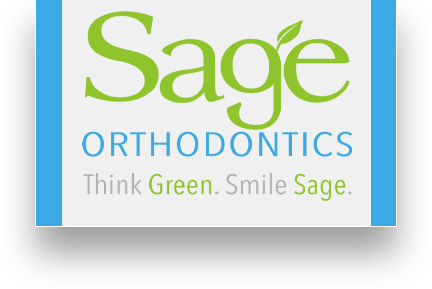
At Sage Orthodontics, we understand that maintaining oral health during orthodontic treatment can present unique challenges. Gingivitis and swollen gums are common issues that can cause discomfort for individuals wearing braces. These conditions often arise from factors such as oral hygiene practices, diet, and lifestyle. Addressing these concerns promptly is essential to prevent more serious health issues.
Here’s a comprehensive look at the causes, symptoms, and treatments for gingivitis and swollen gums with braces:
Understanding Gingivitis and Its Connection to Braces
Gingivitis is a common gum disease triggered by the accumulation of plaque—a sticky film of bacteria—on the teeth and gums. When plaque is not adequately removed through brushing and flossing, it can cause the gums to become inflamed, resulting in gingivitis. Symptoms include red, swollen gums and bleeding while brushing or flossing. Factors such as poor oral hygiene, smoking, diabetes, and certain medications can increase the risk of developing gingivitis.
How Braces Can Contribute to Swollen Gums
Braces can make it more challenging to maintain optimal oral hygiene. Food particles and plaque can easily get trapped around the brackets and wires, irritating the gums and causing them to swell. Additionally, the metal components of braces may rub against the gums, leading to further irritation and discomfort.
Symptoms to Watch For
Common symptoms of gingivitis and swollen gums during orthodontic treatment include:
- Red, swollen gums
- Bleeding while brushing or flossing
- Persistent bad breath
- Painful or tender gums
If left untreated, gingivitis can progress into more severe gum disease, potentially leading to tooth loss.
Prevention and Management Strategies
The key to preventing gingivitis and swollen gums with braces is maintaining rigorous oral hygiene.
Here are some essential tips:
- Brush Twice Daily: Use a soft-bristled toothbrush and fluoride toothpaste to clean your teeth and braces thoroughly.
- Floss Daily: Flossing is crucial for removing plaque and food particles that get stuck between your teeth and around the braces.
- Use Mouthwash: An antibacterial mouthwash can help reduce plaque buildup and keep your breath fresh.
- Avoid Sticky and Sugary Foods: These can contribute to plaque formation and increase the risk of gum problems.
- Regular Braces Maintenance: Ensure that your braces are cleaned regularly to prevent food and debris from accumulating.
Seeking Professional Help
If you experience symptoms of gingivitis or swollen gums, it’s important to consult with an orthodontist promptly. At Sage Orthodontics, we are equipped to diagnose and address these issues effectively. Treatment may involve professional cleaning to remove plaque and tartar, prescription medications to combat infection, and recommendations for better oral care practices. In some cases, a custom mouthguard may be recommended to protect your gums from further irritation.
Conclusion
Gingivitis and swollen gums are manageable with the right care and attention. Proper oral hygiene, mindful eating habits, and regular maintenance of your braces are vital in preventing these issues. If you notice any symptoms of gingivitis or swollen gums, don’t hesitate to contact Sage Orthodontics. Our team is here to ensure that your orthodontic treatment remains as comfortable and effective as possible. Reach out to us today to schedule an appointment and take the next step toward a healthier smile.

